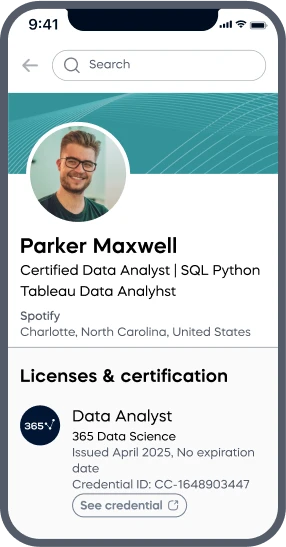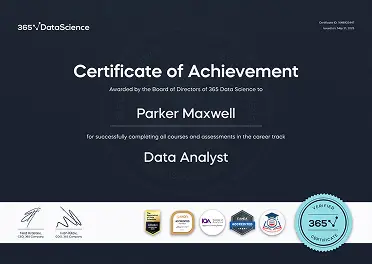Basilio C.
See all reviews
Build a winning corporate strategy: Master the art of competitive positioning and strategic decision-making






Skill level:
Duration:
CPE credits:
Accredited

Bringing real-world expertise from leading global companies
Master's degree, Business Administration
Description
Curriculum
9 in 10
of our graduates landed a new AI & data job
#1 most reviewed
$29,000
average salary increase
ACCREDITED certificates
Craft a resume and LinkedIn profile you’re proud of—featuring certificates recognized by leading global
institutions.
Earn CPE-accredited credentials that showcase your dedication, growth, and essential skills—the qualities
employers value most.





Certificates are included with the Self-study learning plan.


How it WORKS